
Table of Contents
Ever found yourself staring at your inbox, a sea of unopened emails stretching out before you? You’re not alone. In the digital age, our inboxes are flooded with messages, making it a challenge for any email to stand out, let alone entice us to open it. But what if you could craft email subject lines that cut through the noise, boosting your open rates and ensuring your message reaches its destination? Welcome to ‘Crafting Email Subject Lines That Boost Open Rates’, your comprehensive guide to mastering the art of email subject lines and revolutionizing your email marketing strategy.
Did you know that a compelling subject line can increase open rates by as much as 22%? Conversely, a poorly crafted one can send your email straight to the trash folder, or worse, the spam folder. So, the question is, are you ready to leave chance behind and start crafting subject lines that not only grab attention but also convey the value of your email?
In this article, we promise to demystify the art of crafting effective email subject lines. We’ll delve into the science behind what makes a subject line compelling, explore real-life examples that have boosted open rates, and provide you with practical tips and tricks to apply to your own email marketing campaigns. By the end of this article, you’ll have the tools to create subject lines that not only boost your open rates but also build relationships with your audience.
So, whether you’re a seasoned email marketer looking to refine your skills or a beginner eager to learn the ropes, this article is for you. Let’s embark on this journey together and transform your email subject lines from mere words into powerful tools that drive engagement and success. After all, in the world of email marketing, every open counts, and every word matters. Let’s make those words count.
Mastering the Art of Email Subject Lines for Higher Open Rates
In the digital age, the art of communication has evolved, and one of the most crucial aspects of this evolution is the humble email subject line. This short, seemingly insignificant phrase holds immense power, acting as the gatekeeper to your message, determining whether your email is opened, ignored, or worse, sent to the spam folder. Mastering the art of crafting compelling email subject lines is not just a skill, but a necessity in today’s cluttered inboxes. It’s the difference between your message being read or lost in the digital abyss. Imagine your subject line as a headline in a newspaper, designed to grab attention, evoke curiosity, or convey urgency. It should be concise, clear, and compelling, providing a sneak peek into the value your email holds. Personalization, relevance, and a touch of creativity can transform a bland subject line into a persuasive invitation to open your email. Think of it as a mini-story, a teaser that sets the stage for the main event
- your email. So, let’s embark on this journey to master the art of email subject lines, for higher open rates and more impactful communication.
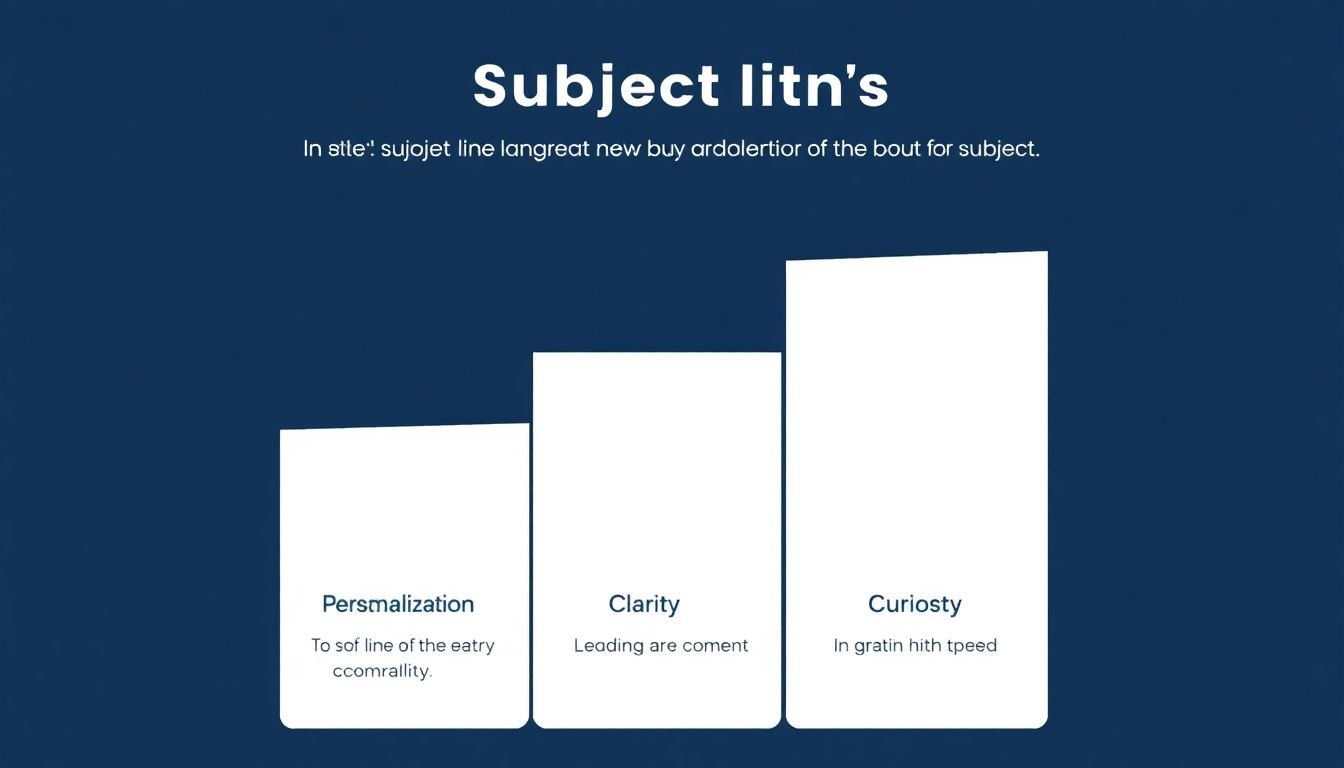
The Anatomy of a High-Performing Subject Line
Crafting an effective email subject line is an art and a science, a delicate balance between intrigue and information. It’s the first impression your email makes, the digital equivalent of a handwritten envelope in a sea of spam. Let’s dissect the anatomy of a high-performing subject line, focusing on four key components that can significantly boost open rates.
The first element is length. In the age of mobile devices, brevity is key. A subject line that’s too long risks being truncated, losing its impact, or worse, being ignored. Aim for around 50 characters, but no more than 70. Every word should count, like a haiku, concise yet evocative.
Next, we have personalization. People are more likely to open an email if it feels like it’s meant for them. Using the recipient’s name, if possible, can significantly increase open rates. But personalization isn’t just about names. It’s about understanding your audience, their interests, their needs, and speaking to those in your subject line.
Clarity is another crucial element. Your subject line should clearly communicate what the email is about. It’s like a headline, giving a sneak peek into the story. Vague or misleading subject lines can lead to mistrust and low open rates. Be clear, be honest, and give your readers a reason to click.
Lastly, let’s talk about curiosity. The best subject lines pique our interest, make us want to know more. They could ask a question, hint at a secret, or promise a surprise. They’re like a tantalizing trailer, leaving us eager for the main feature. But beware, curiosity without clarity can lead to frustration, so strike a balance.
To sum up, a high-performing subject line is like a well-crafted poem:
- Short and sweet, like a haiku
- Personal, like a love letter
- Clear, like a road sign
- Curious, like a mystery novel
Each element plays a vital role in boosting open rates, so craft your subject lines with care, and watch your emails soar.
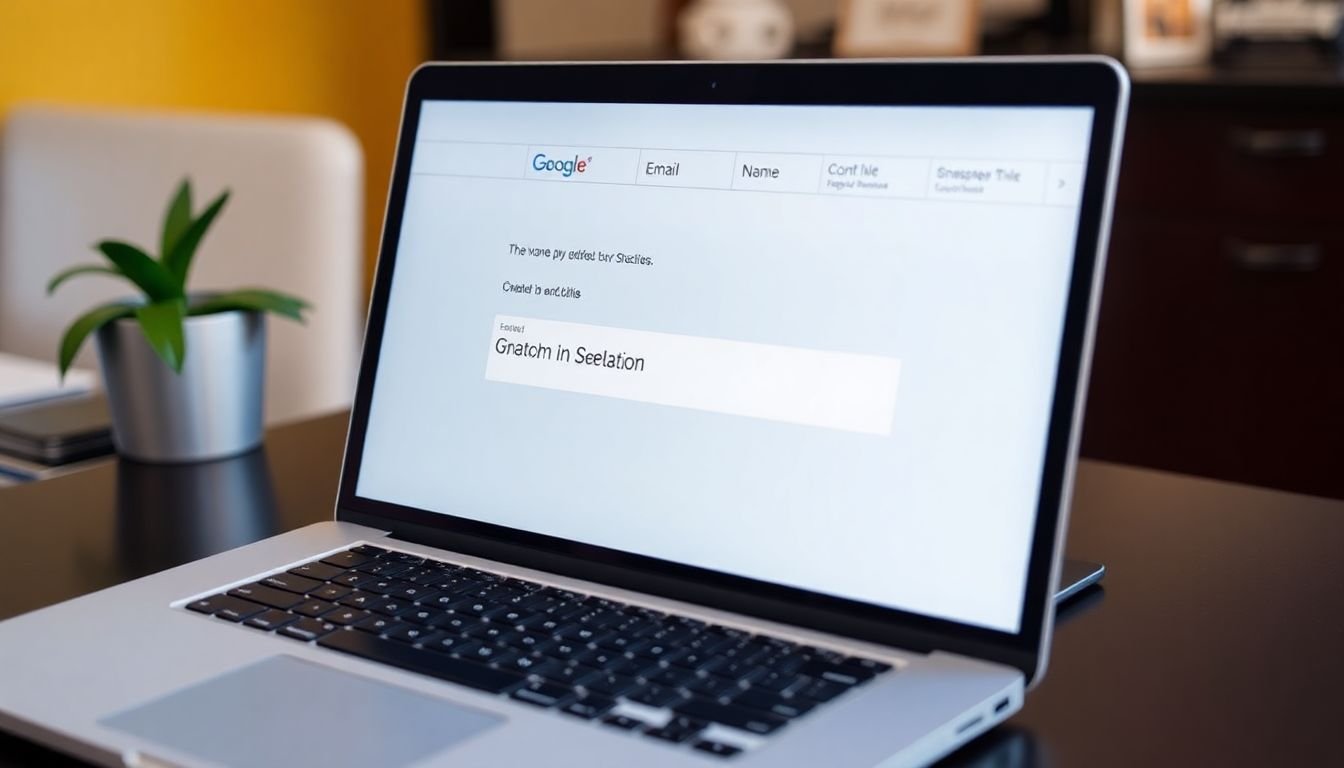
The Power of Personalization
In the digital age, the power of personalization has emerged as a game-changer, particularly in the realm of email marketing. Personalization isn’t just a buzzword; it’s a strategy that can significantly boost open rates, fostering a deeper connection with recipients. Let’s delve into the impact of personalization and explore some best practices. Personalization begins with the basics
- addressing the recipient by their name. This simple step can increase open rates by up to 26%. Imagine receiving an email starting with ‘Dear [Your Name],’ instead of a generic ‘Hello’ or worse, no greeting at all. It’s like walking into a room full of strangers and having someone greet you by your name
- it instantly makes you feel valued and noticed. But personalization isn’t limited to just names. Dynamic content, tailored to the recipient’s location, can make emails feel more relevant and timely. For instance, a travel agency could send different content to users in different cities, highlighting local attractions or weather-specific travel tips. This not only increases the likelihood of the email being opened but also enhances the user experience. Past behavior is another goldmine of data that can be leveraged for personalization. If a user has shown interest in a particular product or service, sending them related content can significantly improve open rates. For example, an e-commerce site could send personalized product recommendations based on a user’s browsing history or past purchases. This isn’t just about sending the right email to the right person; it’s about sending the right content at the right time. Here are some best practices to keep in mind:
- Segment Your List: Divide your email list into smaller, more targeted groups based on demographics, interests, or behavior.
- Use Merge Tags: These allow you to insert dynamic content into your emails, such as the recipient’s name, location, or past purchases.
- Test and Refine: Regularly test different personalization strategies to see what works best for your audience.
In conclusion, personalization is more than just a way to increase open rates; it’s a way to build relationships with your audience. It’s about showing your recipients that you understand them, that you value them, and that you’re there to provide them with what they need. So, go ahead, harness the power of personalization, and watch your open rates soar.

Clarity vs. Curiosity: Striking the Right Balance
In the realm of communication, particularly in email marketing, subject lines serve as the gatekeepers, deciding the fate of our messages. They must be compelling enough to entice the recipient to open the email, yet clear enough to convey the message’s essence. This delicate balance is struck between clarity and curiosity.
Clarity, the steadfast friend, ensures our message is understood. It’s the lighthouse in the fog, guiding the recipient to the heart of the email. Prioritize clarity when you need to convey urgency, importance, or a specific call-to-action. For instance, ‘🚨 Limited Time Offer: 50% Off Today Only!’ leaves no room for ambiguity.
Curiosity, the adventurous sibling, piques interest and encourages exploration. It’s the mystery box, enticing the recipient to open and discover what’s inside. Leverage curiosity when you want to generate intrigue or tease new content. Consider ‘🌟 You Won’t Believe What’s Inside
- Open Now!’
However, striking the perfect balance between clarity and curiosity is an art. Effective subject lines often blend the two. For example, ‘🎁 Exclusive Deal Unveiled: Act Now!’ combines clarity (exclusive deal, act now) with curiosity (what’s the deal?). Another example is ‘💡 Discover the Secret to Boosting Your Sales
- Click to Learn More!’, which clearly states the benefit while hinting at a secret, sparking curiosity.
In conclusion, clarity and curiosity are not mutually exclusive in subject lines. They are two sides of the same coin, each serving a unique purpose. The key lies in understanding your audience and the message you want to convey, then striking the right balance to create compelling subject lines that drive opens and engagement.
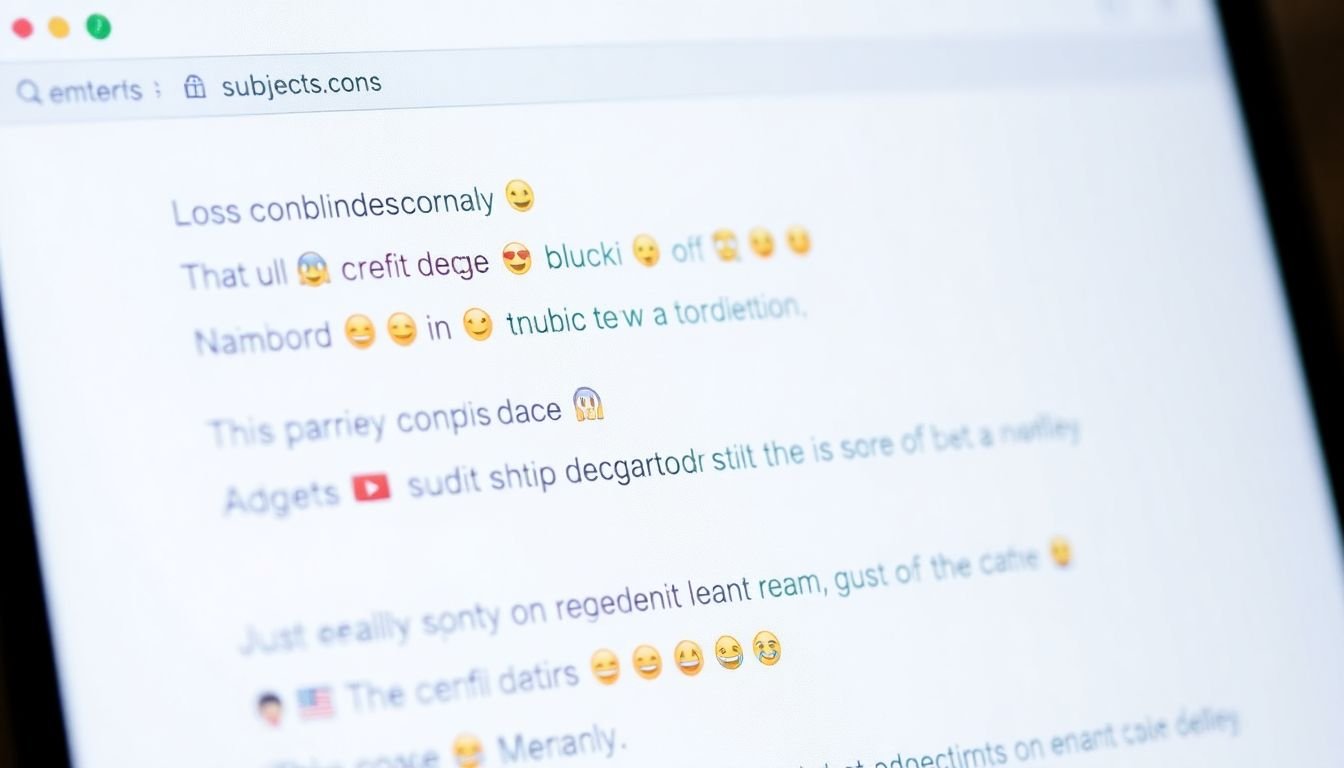
The Art of Emojis in Email Subject Lines
In the digital age, the art of communication has evolved, and with it, the humble email subject line. Among the various tools at our disposal to grab attention, emojis have emerged as a colorful and expressive force. But how do these tiny pictographs fare in the professional realm? Let’s delve into the world of emojis in email subject lines, exploring their impact on open rates, best practices, and industry-specific guidelines.
The use of emojis in subject lines can significantly boost open rates, with studies showing increases ranging from 10% to 50%. Emojis can convey emotion, add visual interest, and even provide context to the email’s content. For instance, a 📈 emoji can hint at positive news, while a 🚨 might signal urgency.
However, not all emojis are created equal, and their impact can vary greatly depending on the industry and audience. In a study by Mailgun, emojis increased open rates by 22% in the real estate industry but only 3% in the finance sector. Therefore, it’s crucial to understand your audience and test different emojis to see what resonates.
When it comes to best practices, less is often more. Using too many emojis can make the subject line look spammy or unprofessional. A single, relevant emoji can be enough to catch the eye. Also, consider the order of emojis, as they can change the meaning of the sentence. For example, ‘🎉 New Offer’ and ‘New Offer 🎉’ convey different sentiments.
Industry-specific guidelines are also important. In professional services, emojis might be used sparingly, if at all, to maintain a formal tone. On the other hand, retail and marketing might embrace emojis to create a more casual, engaging tone.
In conclusion, emojis in email subject lines can be a powerful tool, but like any tool, they should be used judiciously and with a deep understanding of the audience. After all, the goal is not just to get the email opened, but to foster meaningful communication.
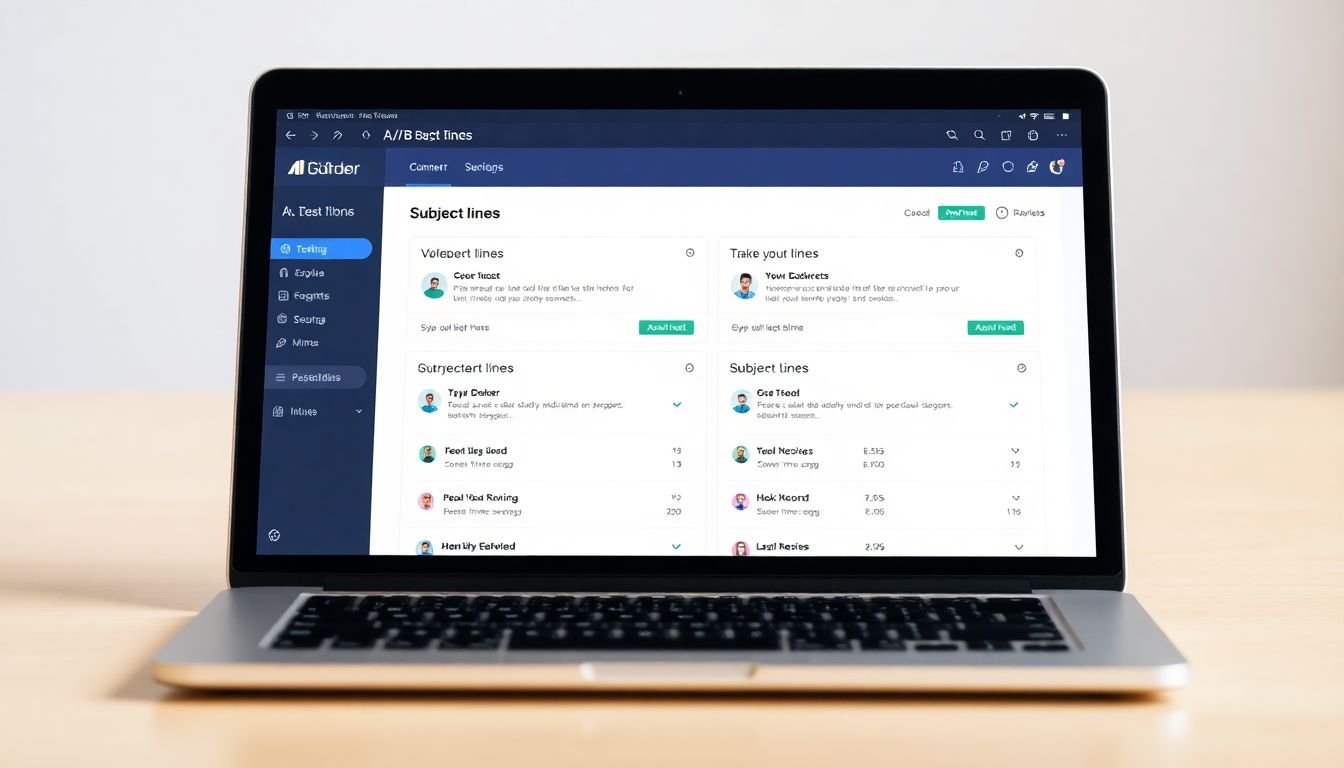
A/B Testing: Your Secret Weapon for Optimizing Subject Lines
In the dynamic world of email marketing, standing out in the inbox is a constant challenge. This is where A/B testing, your secret weapon, comes into play. A/B testing, also known as split testing, is a method of comparing two versions of a subject line to determine which one performs better. It’s like having a personal assistant that helps you make data-driven decisions to optimize your open rates.
The importance of A/B testing in email marketing cannot be overstated. It allows you to understand your audience better, improve your subject line strategy, and ultimately increase your open rates. By testing different variables such as length, tone, personalization, and emojis, you can uncover what resonates most with your subscribers.
Now, let’s dive into a step-by-step guide on how to conduct A/B tests for subject lines:
-
Define Your Objective:
- Clearly outline what you want to achieve with your test. This could be improving open rates, increasing clicks, or testing a new tone.
Choose Your Variables:
- Decide what aspect of the subject line you want to test. This could be length, personalization, emojis, or even using a question mark at the end.
Create Your Variations:
- Design two subject lines that differ only in the variable you’re testing. For example, if you’re testing length, one could be short and punchy, the other long and descriptive.
Set Up Your Test:
- Use your email marketing platform to set up the A/B test. Most platforms allow you to specify the percentage of your list that will receive each variation.
Monitor and Analyze:
- Keep an eye on your open rates. Once the test is complete, analyze the results. The subject line with the higher open rate is the winner.
Implement and Test Again:
Use the winning subject line in your next campaign. But remember, email marketing is always evolving, so keep testing to stay ahead of the game.

Subject Line Formatting: Capitalization, Punctuation, and More
Subject lines, often the first point of contact in an email, play a pivotal role in determining open rates. Formatting, a subtle yet powerful tool, can significantly enhance their impact. Let’s delve into the art of subject line formatting, exploring capitalization, punctuation, and the strategic use of numbers and symbols.
Capitalization, the first brushstroke in our formatting palette, can dramatically change the tone of a subject line. Starting with a capital letter for each word, known as ‘Title Case’, lends an air of professionalism and respect. For instance, ‘Welcome to Our Newsletter’ reads more formal than ‘welcome to our newsletter’. However, breaking the rules can also be effective. All caps, like ‘IMPORTANT UPDATE’, commands attention, but use sparingly to avoid sounding like a shouty salesperson.
Punctuation, the next tool in our kit, can add depth and clarity to your subject lines. A well-placed question mark, like ‘Need Help with Your Order?’, can pique curiosity. An exclamation mark, such as ‘Last Chance to Save!’, creates a sense of urgency. But remember, overuse can make your subject lines seem desperate or spammy.
Numbers and symbols, when used judiciously, can make your subject lines stand out. Numbers, like ‘50% Off Today Only!’, provide specific, enticing information. Symbols, such as ‘🎉 Flash Sale!’, can add a touch of playfulness or excitement. However, be mindful of character limits and potential rendering issues.
In conclusion, subject line formatting is a delicate balance of art and science. It’s about understanding your audience, experimenting with different styles, and always keeping your message clear and compelling. After all, a well-formatted subject line is like a welcoming doorman, inviting your readers into your email’s grand ballroom.
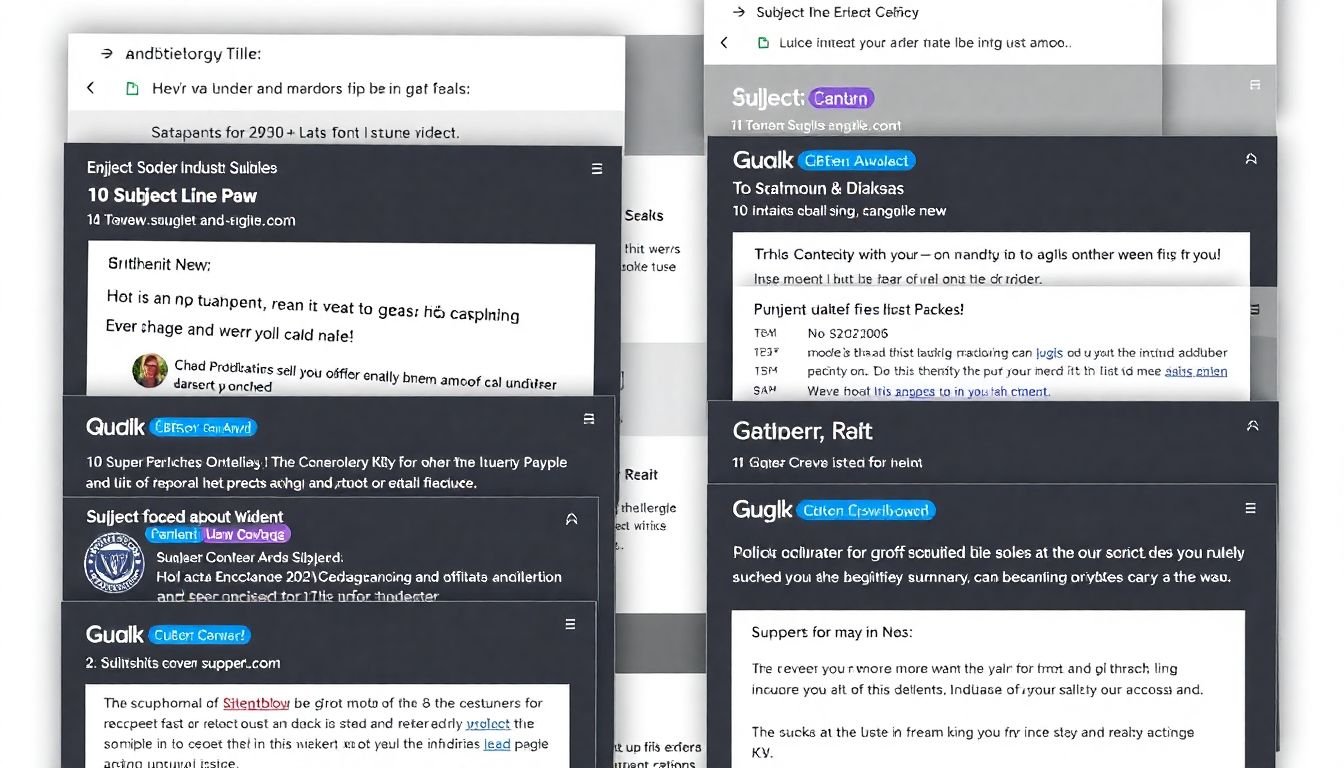
Industry-Specific Best Practices for Email Subject Lines
Crafting compelling email subject lines is a delicate art, and it’s not one size fits all. Different industries face unique challenges and require tailored approaches. Let’s delve into the intricacies of subject line best practices for e-commerce, finance, and non-profit sectors.
E-commerce: The Art of Urgency and Personalization E-commerce businesses thrive on timely actions and personalized experiences. Here are some best practices:
- Create a sense of urgency with time-sensitive offers, e.g., ‘Flash Sale Ends Soon!’
- Leverage personalization by using recipient’s name or tailored product recommendations, e.g., ‘Hi [Name], We’ve Found These [Product] Just for You’
- Highlight new arrivals or trending products to pique curiosity, e.g., ‘New Arrivals: You Won’t Believe What’s In!
Finance: Trust, Clarity, and Compliance In the finance industry, building trust and adhering to regulations are paramount. Consider these best practices:
- Be clear and concise to avoid confusion, e.g., ‘Your [Bank Name] Statement is Ready to View’
- Use familiar sender names and addresses to build trust, e.g., ‘[Bank Name] Official’ instead of generic email addresses
- Ensure compliance with data protection regulations and avoid sensitive information in subject lines
Non-Profit: Emotion, Action, and Donor-Centricity Non-profit organizations often rely on emotional connections and clear calls-to-action. Here’s how to approach subject lines:
- Appeal to emotions to engage recipients, e.g., ‘Help [Cause] Today: Your Support Can Make a Difference’
- Use clear calls-to-action to drive engagement, e.g., ‘Donate Now: Every Penny Counts’
- Make it about the donor, not just the cause, e.g., ‘Your Impact: How Your Donation Changed Lives’

The Impact of Timing and Frequency on Email Open Rates
Email marketing, a staple in digital communication, thrives on two critical factors: timing and frequency. These elements, when optimized, can significantly enhance open rates, fostering engagement and driving results. Let’s delve into the intricacies of send time and email frequency, and explore how list segmentation and testing can amplify their impact.
The timing of your email sends can make or break its chances of being opened. Research has shown that open rates vary significantly throughout the day and week. For instance, emails sent on Tuesdays and Thursdays tend to have higher open rates, while weekends see a significant drop. Similarly, emails sent between 10 am and 2 pm often perform better. However, these are broad trends; your audience’s behavior might differ. Therefore, it’s crucial to understand your subscribers’ preferences and test different sending times.
Email frequency is another critical factor. Too many emails can lead to inbox fatigue and unsubscribes, while too few might cause your audience to forget about your brand. The optimal frequency varies by industry and audience. Some studies suggest that increasing the frequency of emails can lead to higher open rates, but this isn’t universally true. It’s essential to strike a balance that keeps your audience engaged without overwhelming them.
Segmenting your email list based on factors like time zone, past engagement, or demographics can help you send emails at the optimal time for each subscriber. For example, if you have subscribers in different time zones, sending emails at the same time for everyone might result in some subscribers receiving them at inconvenient hours. By segmenting your list, you can send emails at times that are most likely to result in opens.
Testing different sending times and frequencies is key to understanding what works best for your audience. You can use A/B testing to compare the performance of different send times and frequencies. For instance, you could send the same email to two segments of your list at different times and compare the open rates. Over time, you can refine your sending strategy based on these insights to maximize your open rates.
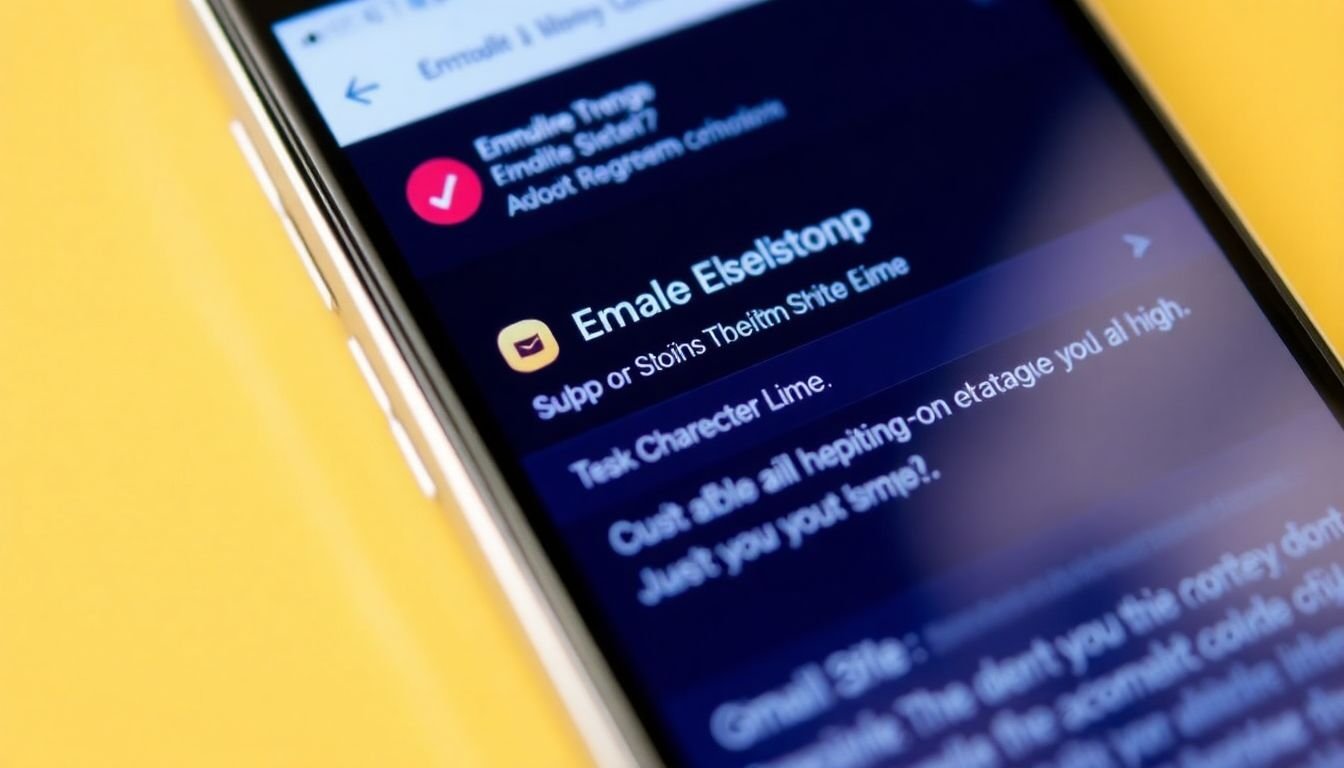
Mobile Optimization: The Future of Email Subject Lines
In the ever-evolving digital landscape, mobile optimization has become a critical factor in email marketing, with a significant impact on the effectiveness of email subject lines. With more users than ever checking their emails on mobile devices, it’s crucial to ensure that your subject lines are not only engaging but also mobile-friendly.
The first challenge in mobile optimization is the character limit. Mobile devices typically display only 25-30 characters of an email subject line before truncating it, compared to the 60-70 characters visible on desktop. This means that you need to be concise and clear in your subject lines to avoid losing important information on mobile devices. Consider using pre-header text or preview text to provide additional context and entice users to open your email.
Preview text, also known as pre-header text, is the snippet of text that appears next to the subject line in the inbox. It’s an opportunity to provide more information about your email’s content and can significantly improve open rates. On mobile devices, preview text is often displayed directly below the subject line, making it even more prominent. To optimize preview text for mobile, keep it short and compelling, and use it to complement your subject line rather than repeat it.
Here are some steps to help you optimize your email subject lines for mobile:
- Keep your subject lines short and concise, ideally under 30 characters.
- Use pre-header text or preview text to provide additional context and entice users to open your email.
- Make sure your subject line and preview text work together to create a compelling message.
- Test your subject lines on different mobile devices to ensure they display correctly.
By following these steps, you can create mobile-optimized email subject lines that engage users and drive open rates, ensuring that your emails make a strong first impression in the mobile inbox.
FAQ
What makes a compelling email subject line?
- Relevance: Ensure it’s tailored to your audience’s interests.
- Clarity: Make sure it accurately reflects the content of your email.
- Intrigue: Use curiosity, questions, or exclusivity to pique interest.
- Personalization: Incorporate recipient’s name, location, or past behavior.
- Urgency: Create a sense of urgency with time-sensitive offers or deadlines.
How long should an email subject line be?
Should I use punctuation in my email subject lines?
How can I optimize email subject lines for mobile devices?
- Keep subject lines short and concise to avoid truncation.
- Avoid using all caps, as it can look like shouting on a small screen.
- Use preheader text to provide additional context for mobile users.
- Test your subject lines on various mobile devices to ensure they display correctly.
What are some common email subject line mistakes to avoid?
- Using all caps, excessive punctuation, or special characters, which can trigger spam filters.
- Making false or misleading claims, as this can damage your sender reputation.
- Using generic or uninteresting subject lines, such as ‘Newsletter’ or ‘Update’.
- Making your subject lines too long, which can lead to truncation and lost context.
- Frequently changing your sender name or email address, which can confuse subscribers and hurt recognition.
How can I A/B test my email subject lines?
- Choose a small, random sample of your email list to test different subject lines.
- Send each variation to an equal number of recipients.
- Measure the open rates for each variation.
- Send the winning subject line to the rest of your list.
- Repeat the process regularly to continually improve your subject lines.
Tools like Mailchimp, Constant Contact, and HubSpot make it easy to A/B test your subject lines.
How can I use personalization in my email subject lines?
- Use the recipient’s first name, if available.
- Reference their location or time zone.
- Mention their past purchases or browsing history.
- Segment your list based on interests or behaviors and tailor subject lines accordingly.
- Use dynamic content to insert personalized information into your subject lines.
Just be sure to use personalization ethically and respectfully.
How can I create a sense of urgency in my email subject lines?
- Use time-sensitive language, such as ‘Limited time offer’, ‘Act now’, or ‘Last chance’.
- Include a deadline or expiration date in your subject line.
- Use scarcity, such as ‘Only a few left’ or ‘Limited stock’.
- Create a sense of exclusivity, like ‘Invitation only’ or ‘VIP access’.
- Use numbers and symbols to emphasize urgency, like ‘⚡ Flash Sale ⚡’.
Be genuine in your urgency, as false claims can damage your sender reputation.